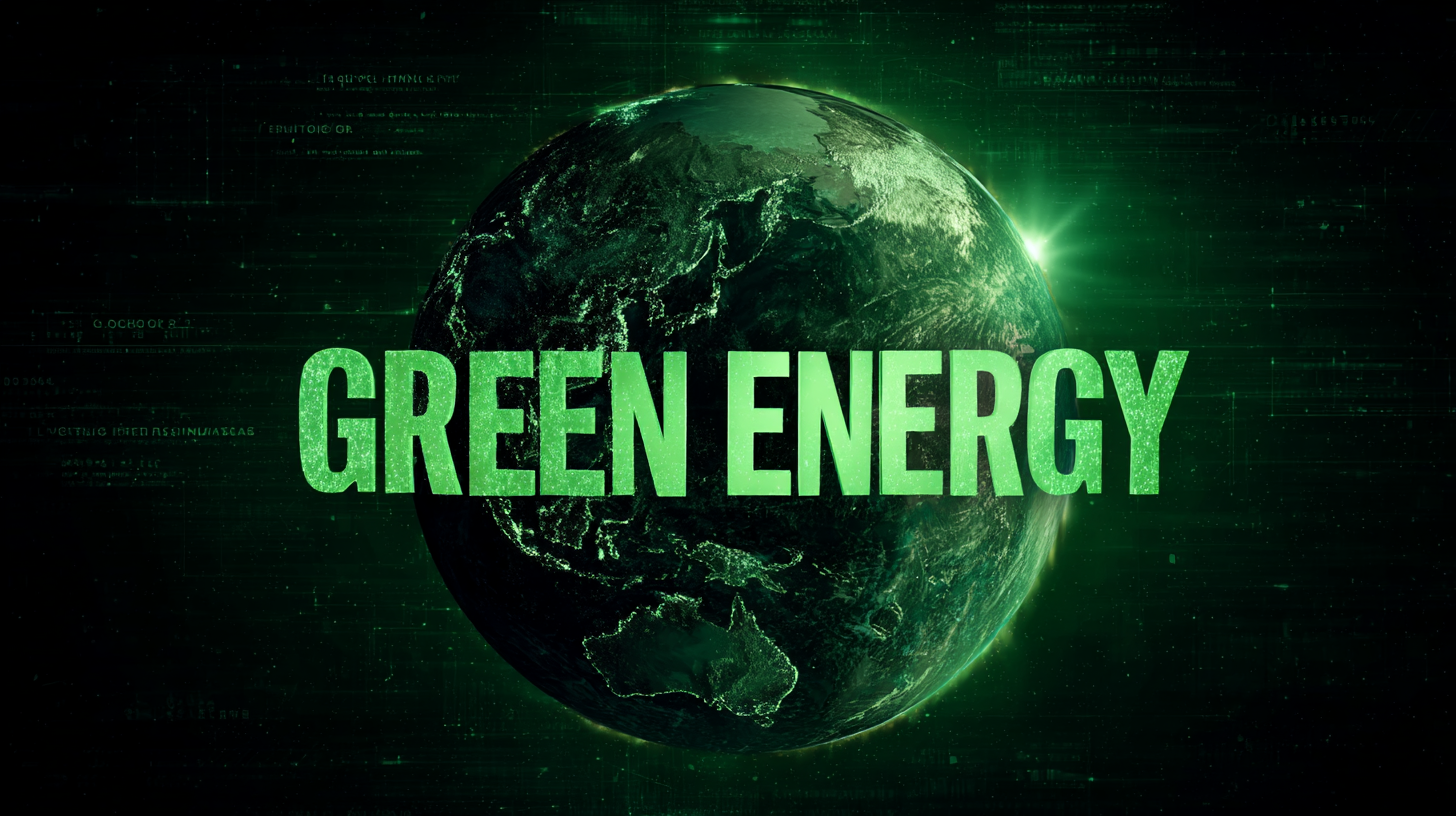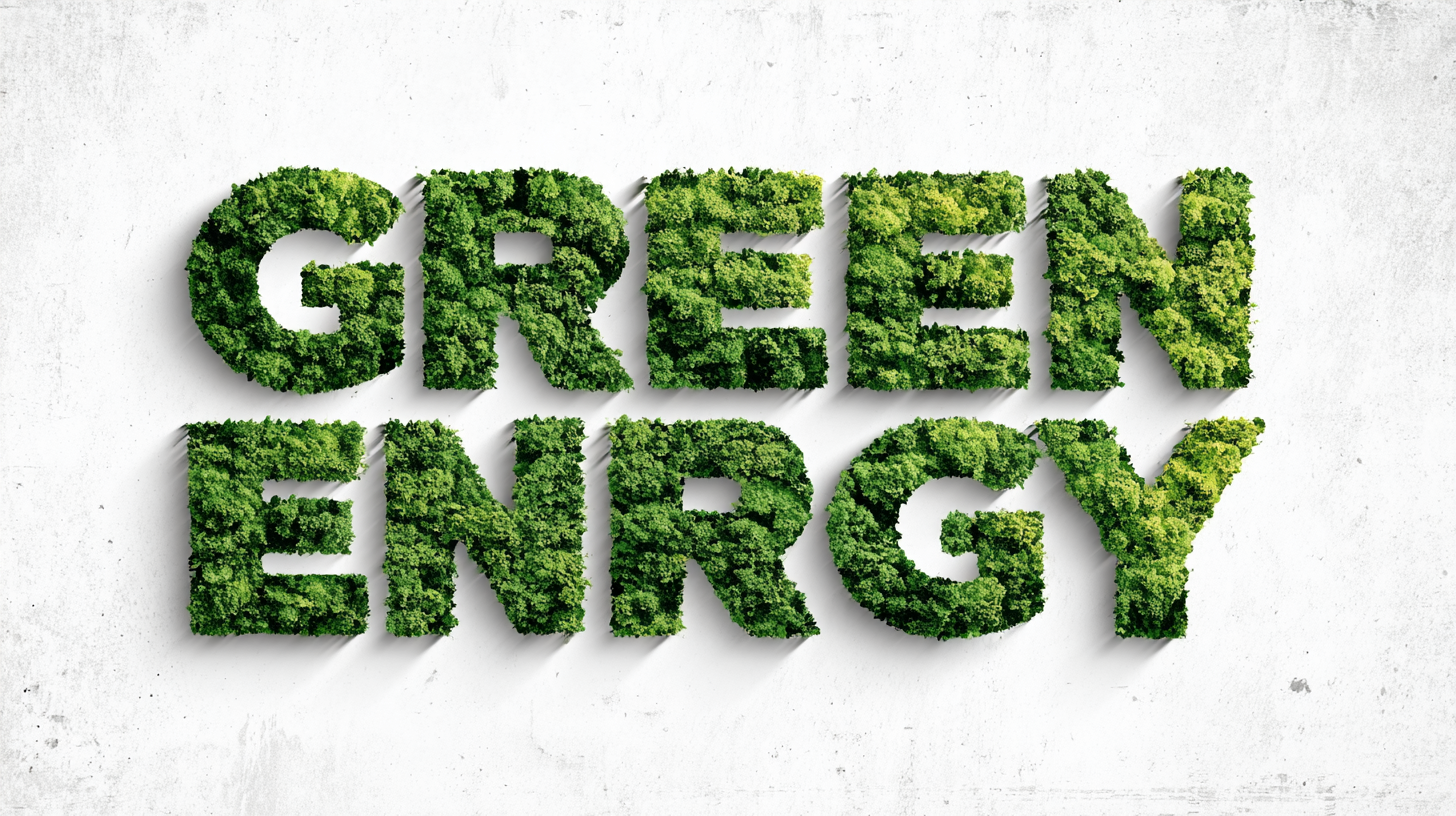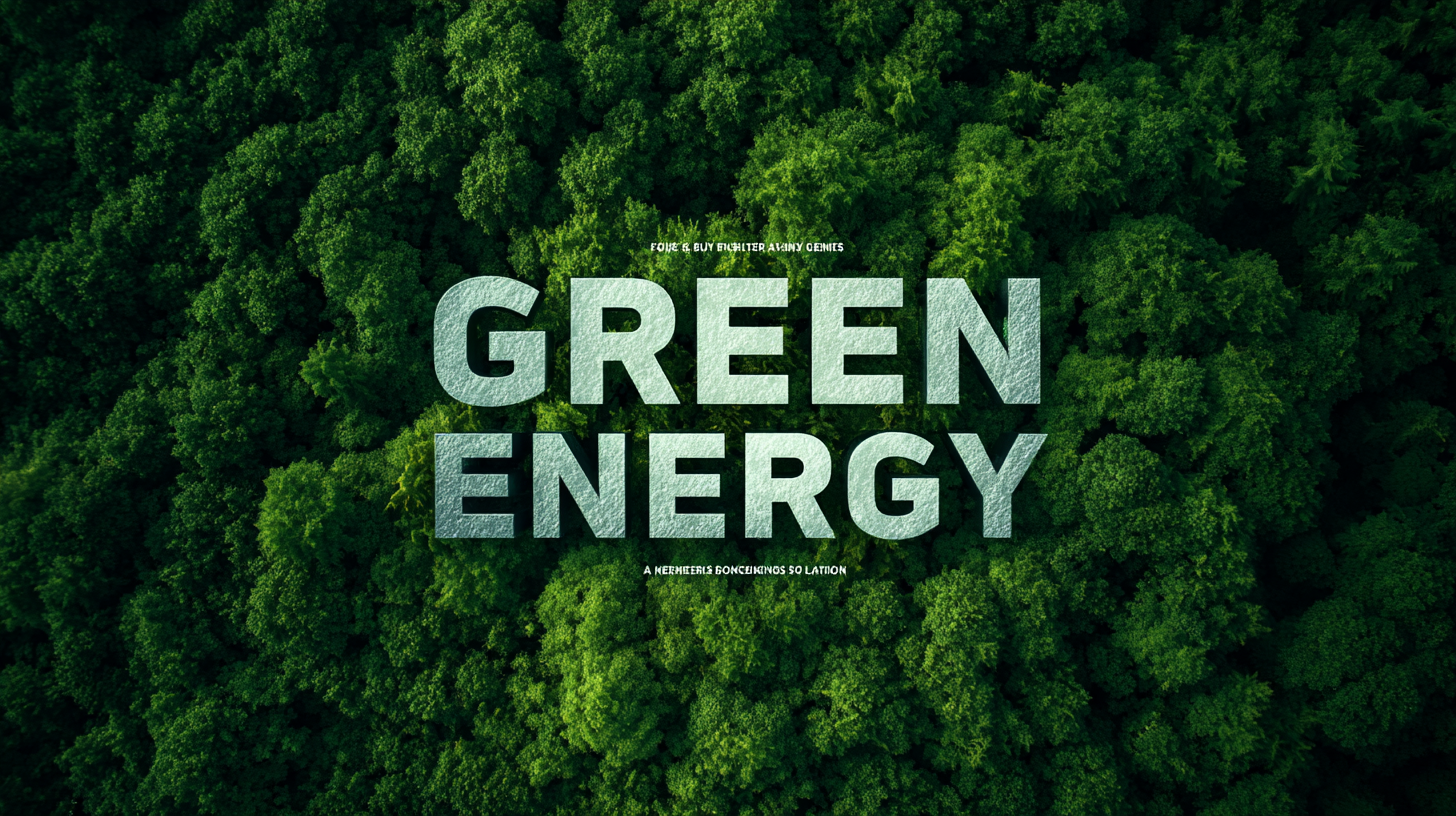Challenges Faced by Global Buyers Seeking the Best Green Energy Solutions
In an era where climate change poses an existential threat, the demand for sustainable solutions has never been greater, particularly in the realm of Green Energy. A recent report from the International Energy Agency (IEA) underscores that global investments in renewable energy are expected to reach over $500 billion annually by 2025, highlighting the urgency and potential of this industry. However, despite the promising growth, global buyers face a myriad of challenges when seeking the best Green Energy solutions.

Barriers such as inconsistent regulations, varying technological standards, and the complexity of supply chains can hinder companies from effectively transitioning to greener alternatives. This ultimate guide aims to explore the landscape of Green Energy solutions, delving into the obstacles buyers encounter while equipping decision-makers with the insights needed to navigate this critical market effectively.
Understanding the Diverse Landscape of Green Energy Products
The landscape of green energy products is rich and varied, reflecting the diverse needs of global buyers. From solar panels and wind turbines to innovative battery storage systems, each product comes with its own set of features, benefits, and challenges. Buyers often face the daunting task of distinguishing which solutions are truly sustainable and efficient. This complexity can lead to confusion, especially when evaluating the latest advancements in technology or navigating the myriad of certifications and standards that exist in the market.
Moreover, the geographical availability of green energy solutions adds another layer of complexity. Different regions have unique energy needs, regulatory frameworks, and resource availability. For instance, solar energy might be a top choice in sun-rich areas, while wind energy could serve better in coastal regions with high wind speeds. Additionally, disparities in infrastructure development can influence a buyer's options, necessitating thorough research and local expertise. Ultimately, understanding this diverse landscape is crucial for global buyers to make informed decisions that align with their sustainability goals.
Evaluating Renewable Energy Sources: Solar, Wind, and Hydro
The evaluation of renewable energy sources, particularly solar, wind, and hydro, is crucial for global buyers aiming to adopt the best green energy solutions. Each of these sources has unique characteristics and potential applications, which must be carefully analyzed to determine their effectiveness in different regions. For instance, solar energy has demonstrated significant potential in Australia, with studies showing it can play a pivotal role in achieving energy sustainability. The integration of wind and solar technologies has also emerged as a promising hybrid solution, providing a reliable energy supply while addressing the intermittency challenges associated with these renewable sources.

Furthermore, the application of comparative life cycle assessments (LCA) offers valuable insights into the environmental impacts of these energy systems. Recent assessments have evaluated integrated renewable energy-based power systems, revealing the importance of understanding energy efficiency within initiatives like the China-Pakistan Economic Corridor (CPEC). This highlights that transitioning to renewable energy is not only about selecting the right sources but also optimizing their integration to maximize performance and minimize ecological footprints. As global buyers navigate these complexities, a strategic approach incorporating local resource evaluation and hierarchical decision-making frameworks will be essential in selecting the most effective renewable energy solutions.
Adapting Green Solutions to Different Industry Needs and Applications
 In today's rapidly evolving market, global buyers face unique challenges when seeking the best green energy solutions tailored to their industry's specific needs. The diversity in regulatory environments, technological advancements, and energy demands means that a one-size-fits-all approach is seldom effective. For instance, the renewable requirements for the manufacturing sector differ drastically from those of the tech or hospitality industries. Buyers must be savvy in identifying solutions that not only meet their sustainability goals but also integrate seamlessly with their existing operations.
In today's rapidly evolving market, global buyers face unique challenges when seeking the best green energy solutions tailored to their industry's specific needs. The diversity in regulatory environments, technological advancements, and energy demands means that a one-size-fits-all approach is seldom effective. For instance, the renewable requirements for the manufacturing sector differ drastically from those of the tech or hospitality industries. Buyers must be savvy in identifying solutions that not only meet their sustainability goals but also integrate seamlessly with their existing operations.
Tips: When assessing green energy options, conduct a thorough analysis of your industry's needs. Engage with experts who understand the nuances of both energy solutions and your specific sector. This ensures that the green technologies you choose can be adapted and scaled according to your operational demands.
Another challenge is the variance in the availability of green technologies across regions. Different countries may have varying levels of investment in renewable infrastructure, directly impacting what solutions are accessible. Buyers should consider local energy resources and invest in partnerships with local firms that understand the regional landscape.
Tips: Stay informed about local policies and incentives for green energy investments. Establishing relationships with local suppliers may also lead to innovative solutions tailored to your unique geographic and economic context, allowing you to optimize your green energy strategy effectively.
Overcoming Regulatory and Certification Hurdles in Green Energy Acquisition
Navigating the complex landscape of green energy acquisition often involves overcoming significant regulatory and certification hurdles. As global buyers seek the best solutions, they must grapple with diverse policies and standards that vary across regions. These challenges can slow the transition to sustainable energy sources, yet they present opportunities for innovation. By fostering collaboration between governments and industry, stakeholders can work toward unified standards that ease the certification processes and enhance the credibility of green energy solutions.
Moreover, government interventions can play a crucial role in smoothing out these regulatory obstacles. By implementing policies that encourage investment in green technologies and providing clear guidelines for certification, governments can accelerate the transition to a greener energy future. Initiatives focused on energy storage, grid modernization, and carbon trading are set to redefine the industry's landscape, making it essential for buyers to remain informed about the evolving legislative environment. This proactive approach not only aids in overcoming barriers but also positions companies to leverage advancements in sustainable innovation effectively.
Challenges Faced by Global Buyers Seeking the Best Green Energy Solutions
The Role of Innovation and Technology in Enhancing Green Energy Options
In the quest for the best green energy solutions, innovation and technology play a pivotal role in overcoming the challenges faced by global buyers. According to a recent report, the energy transition is expected to attract over $4 trillion in investments by 2030, particularly focusing on renewable energy sources like solar and wind power. Governments worldwide are recognizing the importance of green technology; for instance, during the recent forum, a commitment was made to achieve 100% green electricity supply at main event venues. Such initiatives not only align with climate goals but also stimulate economic growth by creating new job opportunities in sustainable sectors.
Moreover, countries like Vietnam are shifting their developmental strategies towards green growth, driven by the urgent need to reconcile economic progress with environmental sustainability amidst increasing natural disasters linked to climate change. Innovations in technology, such as advanced energy storage solutions and smart grids, are enhancing the efficacy of green energy options, allowing for better integration and management of renewable resources. This technological advancement not only empowers businesses to reduce their carbon footprints but also contributes significantly to achieving global climate targets, thereby making a substantive impact on the landscape of green energy solutions worldwide.
Challenges Faced by Global Buyers Seeking the Best Green Energy Solutions
| Challenge | Description | Impact on Buyers | Potential Solutions | Role of Technology |
|---|---|---|---|---|
| High Initial Costs | The initial investment for green energy solutions is often significant. | Limits access for small businesses and consumers. | Subsidies and financing options from governments. | Innovative financing platforms and crowdfunding. |
| Lack of Infrastructure | Insufficient facilities to support green energy deployment. | Inhibits widespread adoption and scalability. | Investment in energy infrastructure upgrades. | Smart grid technologies to enhance energy distribution. |
| Regulatory Challenges | Complex laws and regulations governing green energy. | Creates uncertainty for potential investors. | Advocacy for clearer regulatory frameworks. | Data analytics to understand and meet compliance. |
| Technical Limitations | Technology for green energy can be immature or inefficient. | Might deter investment in innovative solutions. | Research and development investment. | Emerging technologies improving energy efficiency. |
| Market Competition | Increased competition among renewable sources. | Pressure on prices and profit margins. | Collaboration and partnerships across businesses. | Blockchain for transparent energy trading. |
